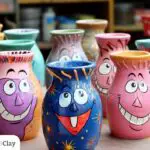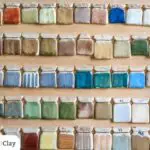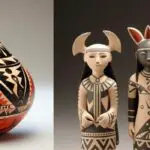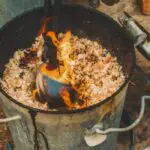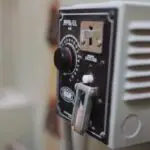Clay – you can’t do ceramics without it! But there’s a lot to know when it comes to picking the type of clay you’ll use and the different stages. In this article, we’ll take a look at the different types of pottery and pottery clay stages.
What is clay?
Clay is a natural geologic material that can be molded and shaped when wet and becomes hardened when dried or fired. This is due to the molecular makeup of how clay particles come together with water, minerals, and sand.
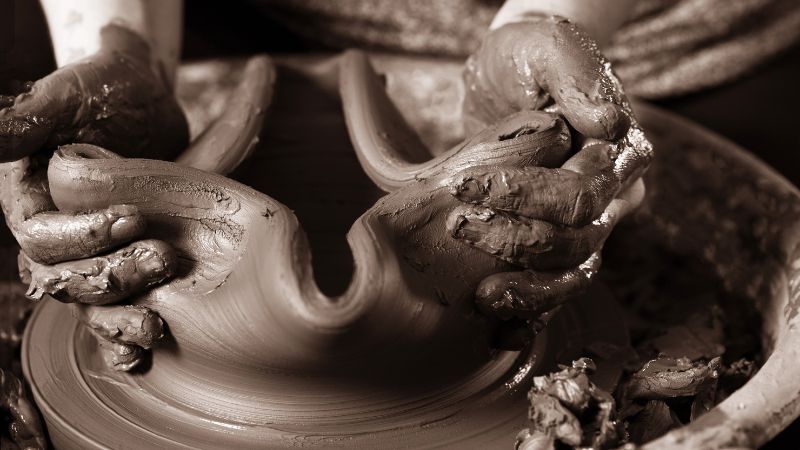
Clay is a common natural substance found in the ground. In fact, you might find some if you started digging in your backyard right now. Clay typically has a red or brown tint to it. But pure clay is white. The iron in the ground changes the color to what we think of when we think of clay.
You‚’d be able to tell if you’re dealing with clay or soil because clay is sticky and clumps together. Unlike sandy soil which falls apart easily.
The 3 main uses of clay
1. Clay for construction
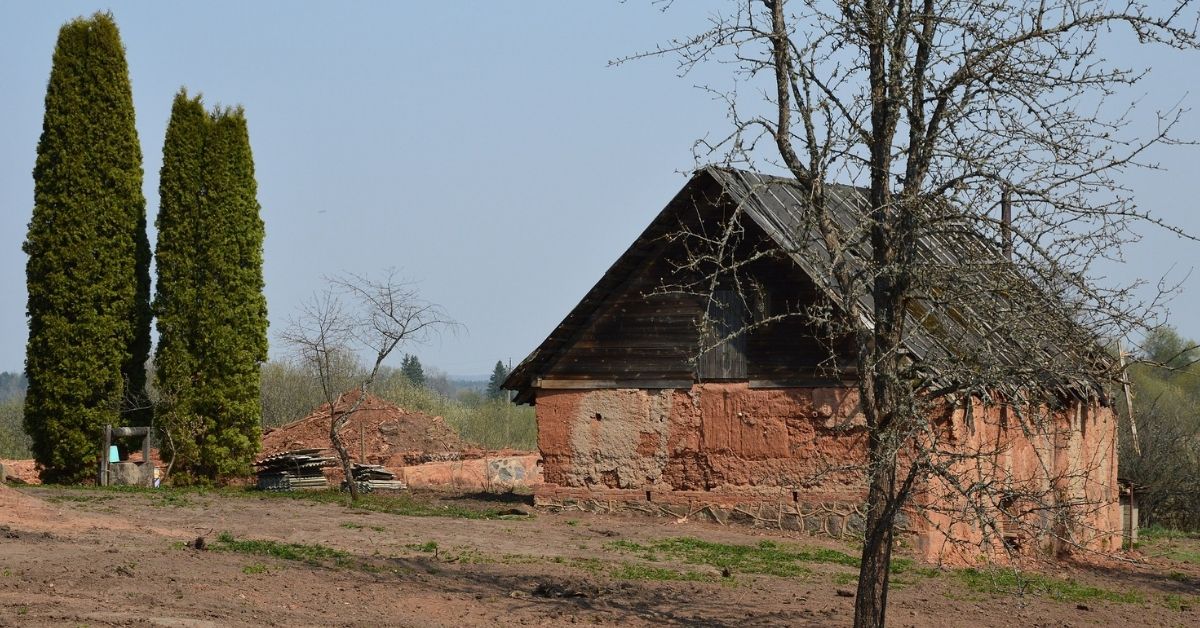
For centuries, clay has been used in construction. And still, to this day, clay is central to building homes and structures. If you have a brick house, chances are you’re surrounded by earthenware.
The cultures that made the American Southwest their home hundreds of years ago made clay structures an art form. You should check out some of the really cool adobe structures in New Mexico.
2. Clay for health: Medicine and self-care

In ancient times, clay was used for medicinal use. In Egypt and Mesopotamia, there are records showing clay was used as an anti-inflammatory agent. It was also common as an antiseptic to reduce the chance of infection.
You may know about clay masks for skincare. Well, that’s not recent! There are reports that document Cleopatra using clay to preserve her complexion. Today, face masks are big business. Clay masks are commonly used to moisturize the skin.
3. And of course pottery clay
I don’t think I’ll dive into how clay is used for pottery. It’s probably why you’re here, so you’re already well aware! 🙂
4 Types of clay for pottery
1. Earthenware
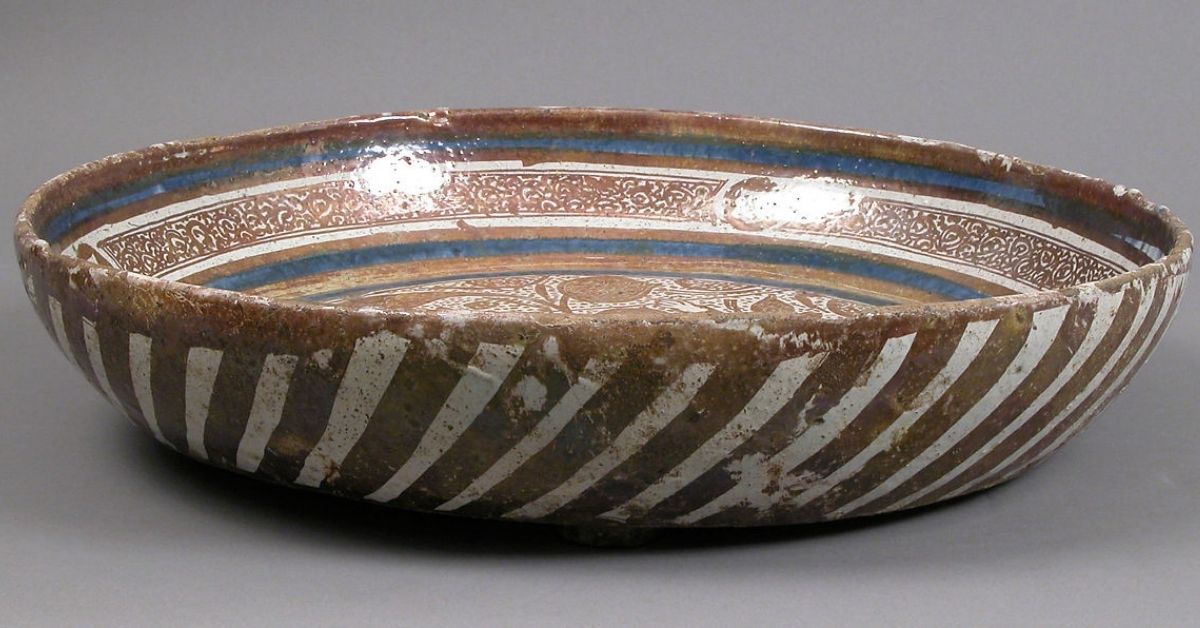
Earthenware is typically a more porous and coarser texture than it’s porcelain and stoneware siblings.
Earthenware was used to make some of the oldest known pottery. The most common earthenware clay is Terracotta (thrust into the limelight by the terracotta warriors). But there are other types as well such as Redware (Americas) and Raku (Japan).
If you read our piece on Japanese pottery, then earthenware is familiar to you. Before porcelain, a vast majority of Japanese pottery was made in earthenware clay.
2. Stoneware
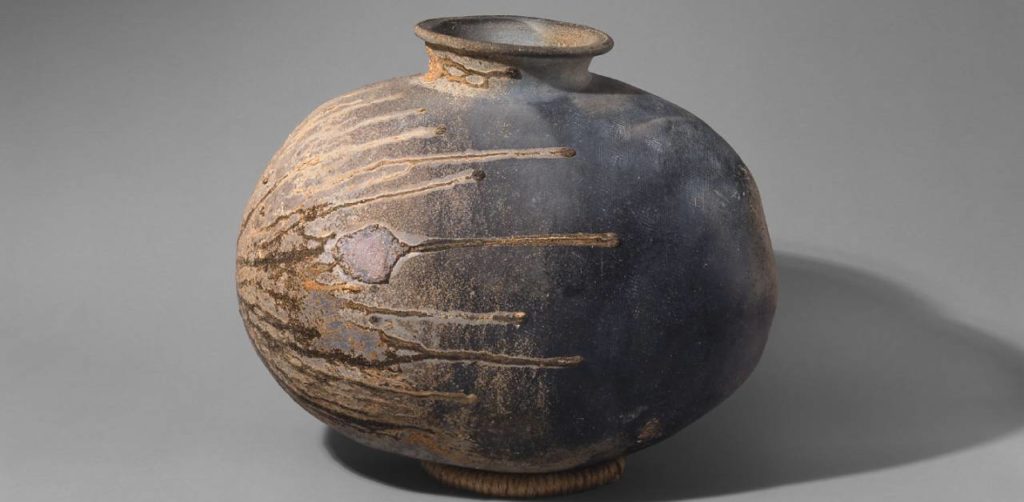
Stoneware is typically a less porous and sturdier material than its porcelain and earthenware siblings. People settled in the Indus valley (modern-day Pakistan and northern India) made a lot of stoneware. The use of this type of clay spread north to China. The Chinese produced some of the most celebrated ancient pieces in stoneware during the Han Dynasty (Indus Valley).
Because it’s less porous stoneware is great for use in cooking, baking, storing liquids. Stoneware is incredibly durable. It can withstand heat and other elements, so it’s safe in the oven, microwave, and other similar uses.
3. Porcelain
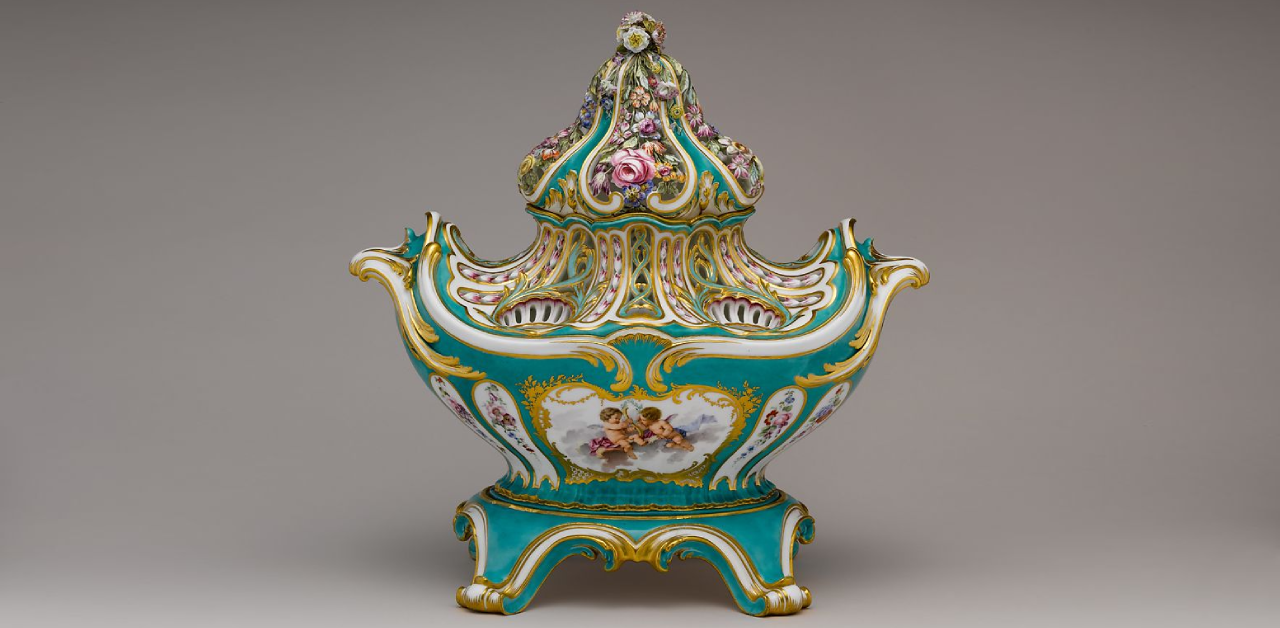
Porcelain is an incredibly popular style due to its unique delicate finish, yet durable structure. There are functional and decorative everyday uses for porcelain. You’ve probably used porcelain recently!
Porcelain is an ancient style of making ceramics dating back to the Shang Dynasty in China (1600 – 1046 BC). You‚’ve probably used porcelain that mirrors the style developed so long ago if you’ve ever eaten on fine china.
4. Ball Clay
Ball clay is less abundant than the other three types of clay. Its properties are similar to that of earthenware. The big difference between ball clay and earthenware is the white finish after firing. You’ll find ball clay in the eastern United States and in Great Britain.
In fact, Great Britain has a bit of a tradition with ball clay. The earliest ball clay vessels were discovered in England. It’s believed the name comes from mining the material by hand.
Still curious? Click here to find out what are the 4 types of clay?
How to choose pottery clay for your next project
There are 4 we think you need to consider when picking clay for your next pottery project.
- The type of clay: Which of the 4 types fits what you’re trying to accomplish best?
- What is clay grog and why does it matter?: Grog changes clay to be more workable. But it also changes the finish.
- Color and finish: The clay you pick will affect how your piece looks in the end.
- Firing your piece: Lastly, what kiln and firing options you have will determine what clay you can and shouldn’t use.
We wrote a whole article on these 4 points. So get your learn on! Read it at the link 👇
Still curious? Click here to find out how to choose pottery clay for your next project?
What is grog in clay?

Grog is raw, granulated material that is added to clay to make the clay workable. Often grog is clay that has been fired and then ground up into a powder.
Grog can help prevent shrinkage during the drying and firing process. It can also be a buffer for your piece from cracking during higher stress situations because grog adds particles in between the plastic clay.
And lastly, grog can adds structure to your piece. The grog is like bricks. The rest of the clay is like mortar. The bricks hold the wall up while the mortar holds the bricks together.
Still curious? Learn about Grog in Ceramics
7 stages of pottery clay
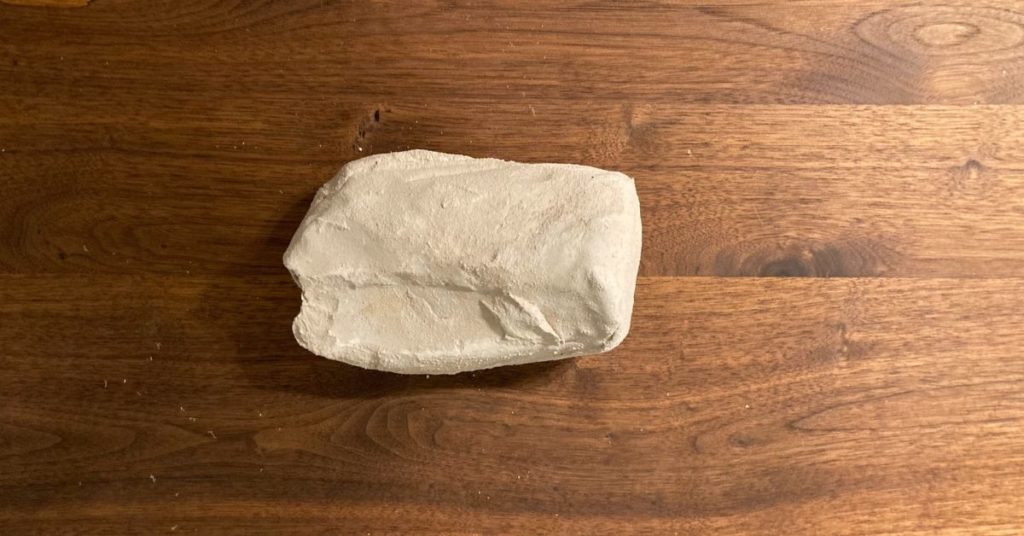
There are 7 stages clay goes through to leave its natural state in the ground and become a finished piece. Those stages are:
- Dry clay
- Slip
- Plastic clay
- Leather hard clay
- Bone dry clay
- Bisque
- Glazeware
These 7 stages are the formalized version of what humans have been doing for thousands of years to make pottery. Each stage is vital for taking a piece from dirt to a finished ceramic product you can be proud of.
Still curious? Click here to find out about the 7 stages of clay.
What is clay slip?
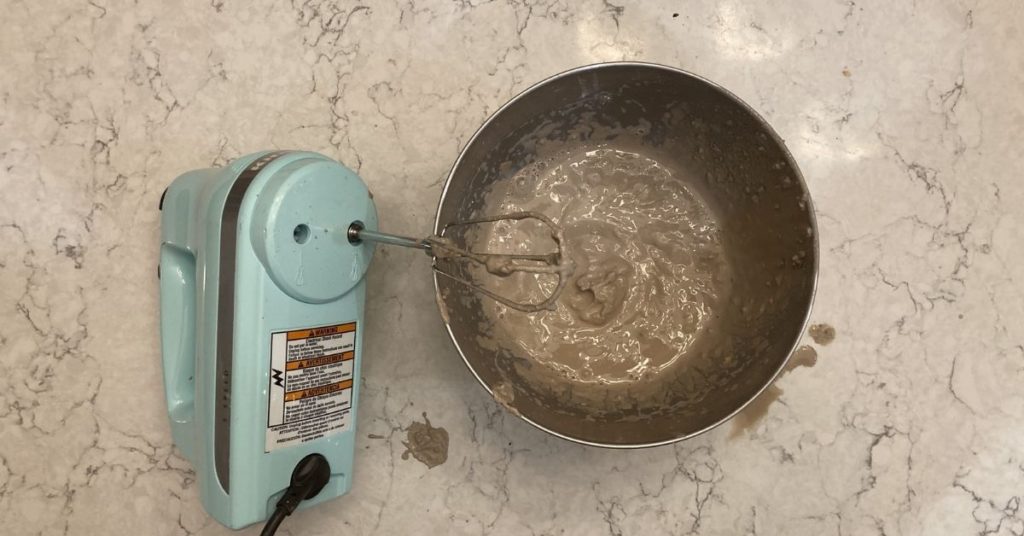
Clay slip is a liquid mixture of clay in water. It has a consistency like heavy cream though it can be runnier depending on what you’re using it for.
It has 3 main uses in ceramics making:
- Decoration: Often called “slip trailing”, a slip decoration becomes part of the pot when fired.
- Pouring moulds (slip casting): A potter pours slip into the plaster cast. You’ll want to pour enough to create a layer on the surface of the interior walls of the plaster mould. The slip then sets and takes for form of a mould.
- Adhesive to bond pieces (slip and score): Slip and score in pottery is a technique used to join two pieces of clay together. To slip and score clay, a potter scratches marks on the surface of the clay (score). The potter then applies a liquid mixture of clay in water (slip) to the scored surface.
Still curious? Click here to find out what is clay slip?
How to make clay slip
You make clay slip by following 6 simple steps:
- Collect clay scraps and dry clay blocks
- Break up the clay slabs into coin-sized pieces
- Add your clay to water in soak
- Blend the clay/water mix with a kitchen blender
- Straining your slip to make it absolutely smooth
- Store the pottery slip so that it maintains its consistency
You can make clay slip for the low, low price of… FREE! It shouldn’t cost you anything if you’re already making pottery. The goal is to recycle unusable clay into potters slip.
Still curious? Click here to find out how to make clay slip.
What causes clay to crack?
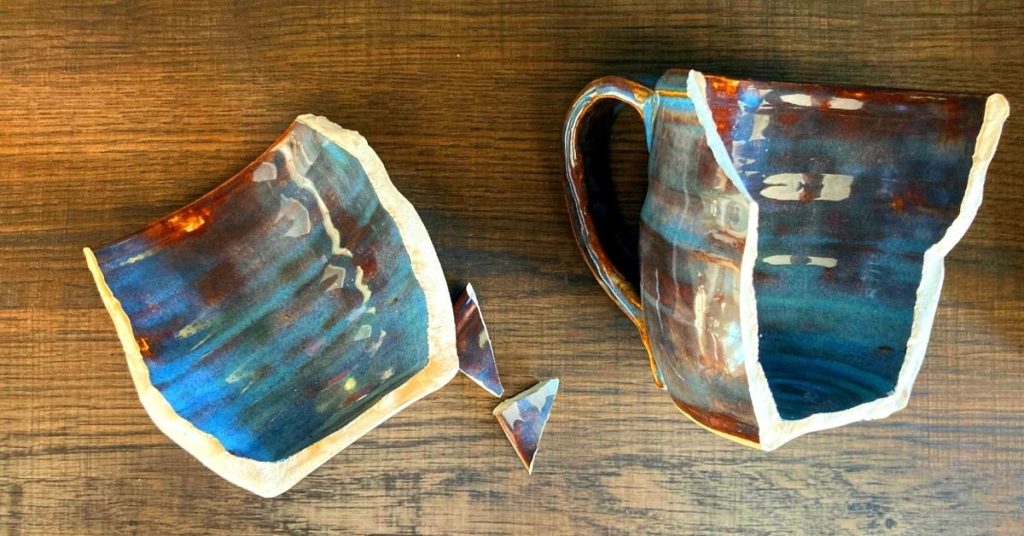
If you’ve been making ceramics for some time, you’ve probably experienced a piece cracking. It’s painful… So what causes ceramic cracks? There are 6 primary causes of cracked pottery:
- Not properly wedging clay
- Unevening drying clay
- Unevening wall thicknes
- Type of clay and its plasticity
- Inconsistent kiln firing
- Poorly joined joints
If you want to know more, be sure to read our article covering these causes in detail 👇. Hopefully, it helps you avoid major upsets in the future!
Still curious? Click here to find out about the 6 causes of clay cracking in pottery.
Conclusion
That’s it! You’ve learned everything you need to know about clay (not really ;)). If you have any questions, simply email us at hello@wheelandclay.com. We’d be happy to help.

